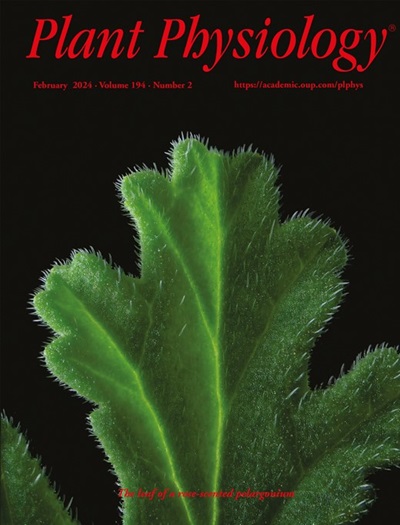The quantitative effect of seed production triggers the end of flowering in tomato
IF 6.5
1区 生物学
Q1 PLANT SCIENCES
引用次数: 0
Abstract
Flowering plants adjust their reproductive period to ensure reproductive success. This involves a tight control of both flower initiation and the termination of the flowering period to optimize resource allocation for seed production. The end of flowering is marked by the cessation of flower production by the inflorescence meristems, which enter a dormant-like state known as proliferative arrest. This process has been mainly studied in Arabidopsis (Arabidopsis thaliana) at the physiological, genetic, and molecular levels but remains to be characterized in other species, which could provide general mechanisms and the groundwork for designing biotechnological strategies aimed at controlling the duration of fruit/seed production. Solanum lycopersicum (tomato) is an excellent model for this goal because of its economic importance and the marked differences in plant architecture, meristem organization, and fruit development. By comparing plants producing fertile and parthenocarpic seedless fruits, we have determined that proliferative arrest in tomato is a reversible process triggered by seed formation. We have identified the seeds as the likely source of signals that instruct the meristems to arrest in a coordinated and quantitative manner. The presence of auxin and abscisic acid in exudates from fertile but not from parthenocarpic fruits and the effect of treating seedless fruits with exogenous auxin on proliferative arrest support a major role of these phytohormones in the communication between seeds and meristems. Our work supports the conservation of factors controlling proliferative arrest in flowering plants while providing insights into the regulation of this process.种子生产的数量效应触发了番茄的开花结束
开花植物调整繁殖周期以确保繁殖成功。这包括严格控制开花起始和花期终止,以优化种子生产的资源分配。开花结束的标志是花序分生组织停止开花,进入一种类似休眠的状态,称为增殖停止。这一过程主要在拟南芥(Arabidopsis thaliana)中进行了生理、遗传和分子水平的研究,但在其他物种中仍有待进一步研究,为设计旨在控制果实/种子生产持续时间的生物技术策略提供一般机制和基础。茄属番茄(Solanum lycopersicum)具有重要的经济价值,而且在植株结构、分生组织和果实发育方面存在显著差异。通过比较产生可育和单性无籽果实的植物,我们确定了番茄的增殖停滞是一个由种子形成引发的可逆过程。我们已经确定种子可能是指示分生组织以协调和定量的方式停止的信号来源。生长素和脱落酸存在于可育而非单性果实的分泌物中,以及外源生长素处理无籽果实对增殖阻滞的影响,支持了这些植物激素在种子和分生组织之间的交流中起主要作用。我们的工作支持了开花植物控制增殖阻滞的因素的保护,同时为这一过程的调控提供了见解。
本文章由计算机程序翻译,如有差异,请以英文原文为准。
求助全文
约1分钟内获得全文
求助全文
来源期刊

Plant Physiology
生物-植物科学
CiteScore
12.20
自引率
5.40%
发文量
535
审稿时长
2.3 months
期刊介绍:
Plant Physiology® is a distinguished and highly respected journal with a rich history dating back to its establishment in 1926. It stands as a leading international publication in the field of plant biology, covering a comprehensive range of topics from the molecular and structural aspects of plant life to systems biology and ecophysiology. Recognized as the most highly cited journal in plant sciences, Plant Physiology® is a testament to its commitment to excellence and the dissemination of groundbreaking research.
As the official publication of the American Society of Plant Biologists, Plant Physiology® upholds rigorous peer-review standards, ensuring that the scientific community receives the highest quality research. The journal releases 12 issues annually, providing a steady stream of new findings and insights to its readership.
 求助内容:
求助内容: 应助结果提醒方式:
应助结果提醒方式:


